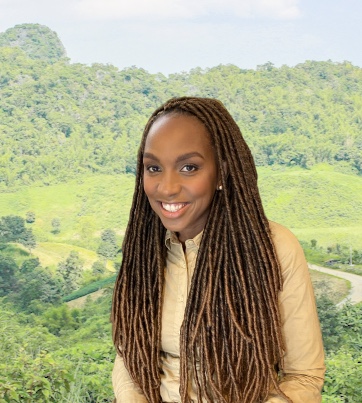I knew my Aunt Sharon had a unique story to tell. What seemed to others like a diverse family dynamic was simply our normal. My uncle, my dad’s oldest brother is Black, and my aunt is White. I never thought much of it because my parents did not talk much about race. Through her memoir Intended, I hope to learn exactly how she navigated an interracial marriage during the 1960s.
Aunt Sharon was the first white person I knew. She is kind and patient with a quiet strength. Her deliberate and resolved demeanor amplifies her natural beauty. This positive and loving experience shaped my narrative for how I frame my relationships with people of all races. Unless there is an obvious danger, I see humanity first, then I base our ongoing relationship on a foundation of ease. I tried hard to eliminate bias or generalizations, modeling the interracial family dynamic that I observed growing up.
As a wife and mother, I look forward to understanding more about her marriage to my uncle, her process of thought, and the way they navigated their reality. As an interracial family, they clearly must have stood out in society. What I am most impressed with is their level of endurance and resolve to build a marriage despite the outside world.
Over the past nine months, they have been safely quarantined in their Illinois home in what Aunt Sharon names in her Facebook posts as “sheltered in positivity.” In order to thrive as Executive Director of a nonprofit and raise remarkable children, she must have been quarantined and sheltered in positivity well before 2020. In ordered to create a good life worth living while raising children and balancing the ills of social injustice, it is imperative that you have a positive mindset.
I look forward to learning the formula and the science behind it all. Was the core component love? If so, I know this ingredient firsthand. It’s what I experienced during our summer visits to their small town. It is the ingredient that covered me when we visited the local pool, and I wore textured braids in my hair compared to my cousin’s long curly hair. It was love that allowed me to maintain my confidence despite the obvious differences.
In her new book titled Intended , my Aunt Sharon Nesbit-Davis tells the full story.
“As a White child growing up during the first wave of the civil rights movement, Sharon Nesbit’s early affections and relationships challenged the stagnant mindsets of many around her and paved the path toward her life commitments both to the Baháʼí Faith and to the love of her life, my Uncle George.”
In 1976, when Aunt Sharon and Uncle George were wed in a simple outdoor ceremony, there were many concerns amid the support from family and friends. According to her book synopsis, my grandmother wondered why her Black son would choose to make his life more difficult by marrying a White girl. Sharon’s parents were not in attendance, despite having given their hard-earned blessing after five years.
Even among well-meaning friends arose a question: “What about the children?”
On a basic level, many people would accept the marriage of my Aunt Sharon and Uncle George as normal: two people who loved each other. But in 1976, race complicated things. It still does. But that does not mean my Aunt Sharon and Uncle George were not intended to be together.
Sharon Nesbit-Davis is a mime, a writer, a storyteller, and a visual artist who facilitates “Creative Recharge” workshops for all ages. She recently retired from her “day job” as Executive Director of the Rockford Area Arts Council. My aunt and uncle live happily in Rockford, IL and they have two children and eight grandchildren.


